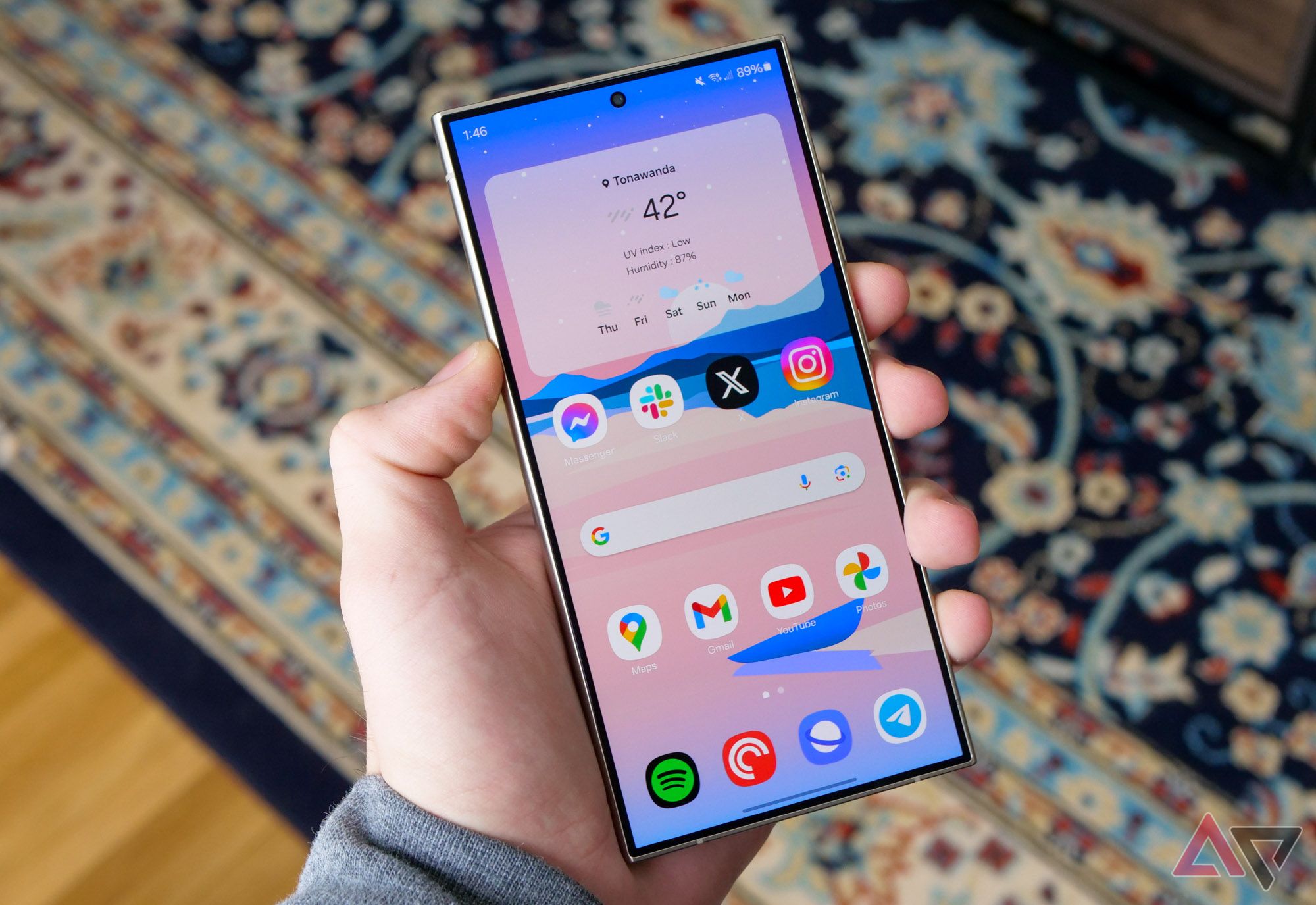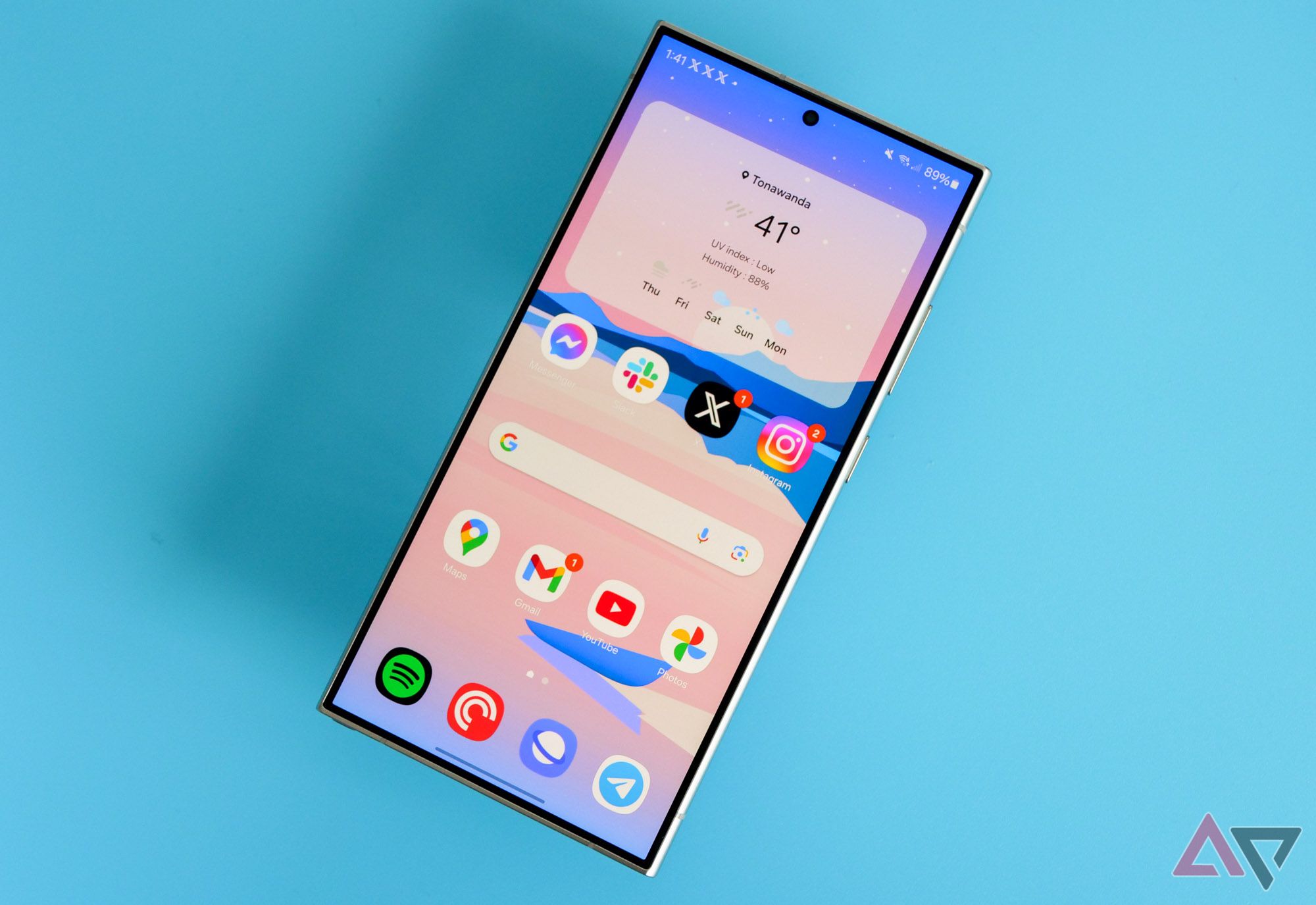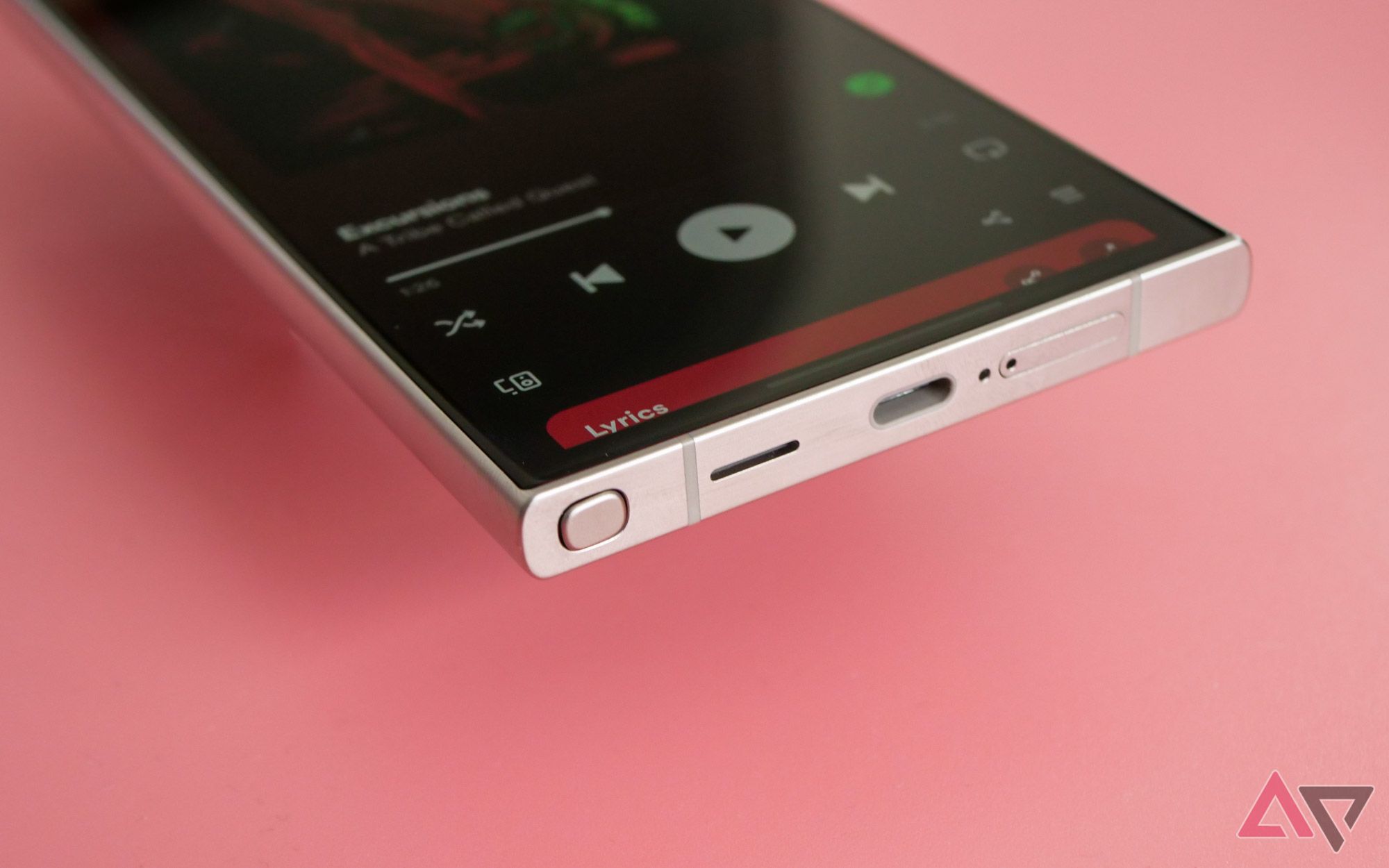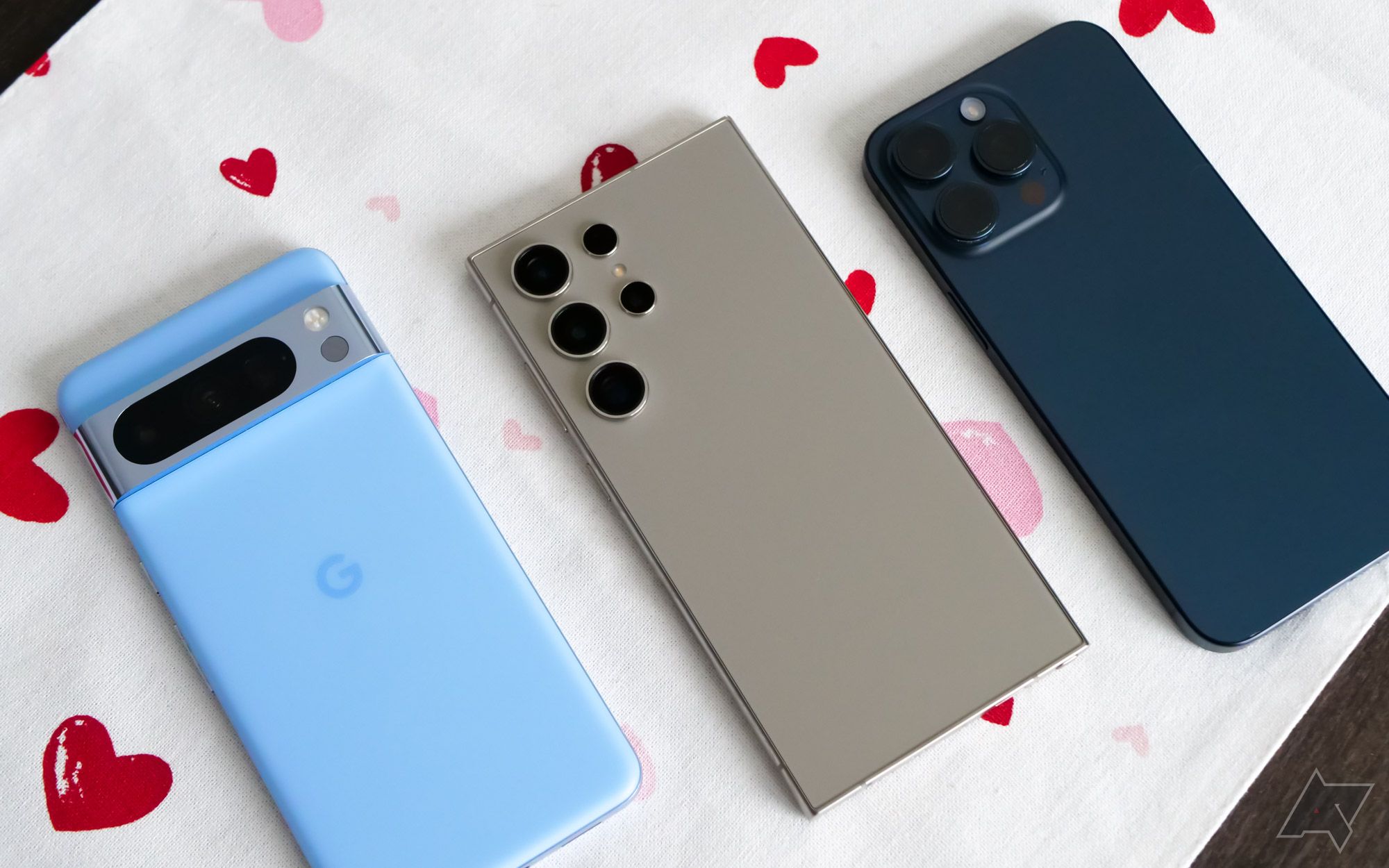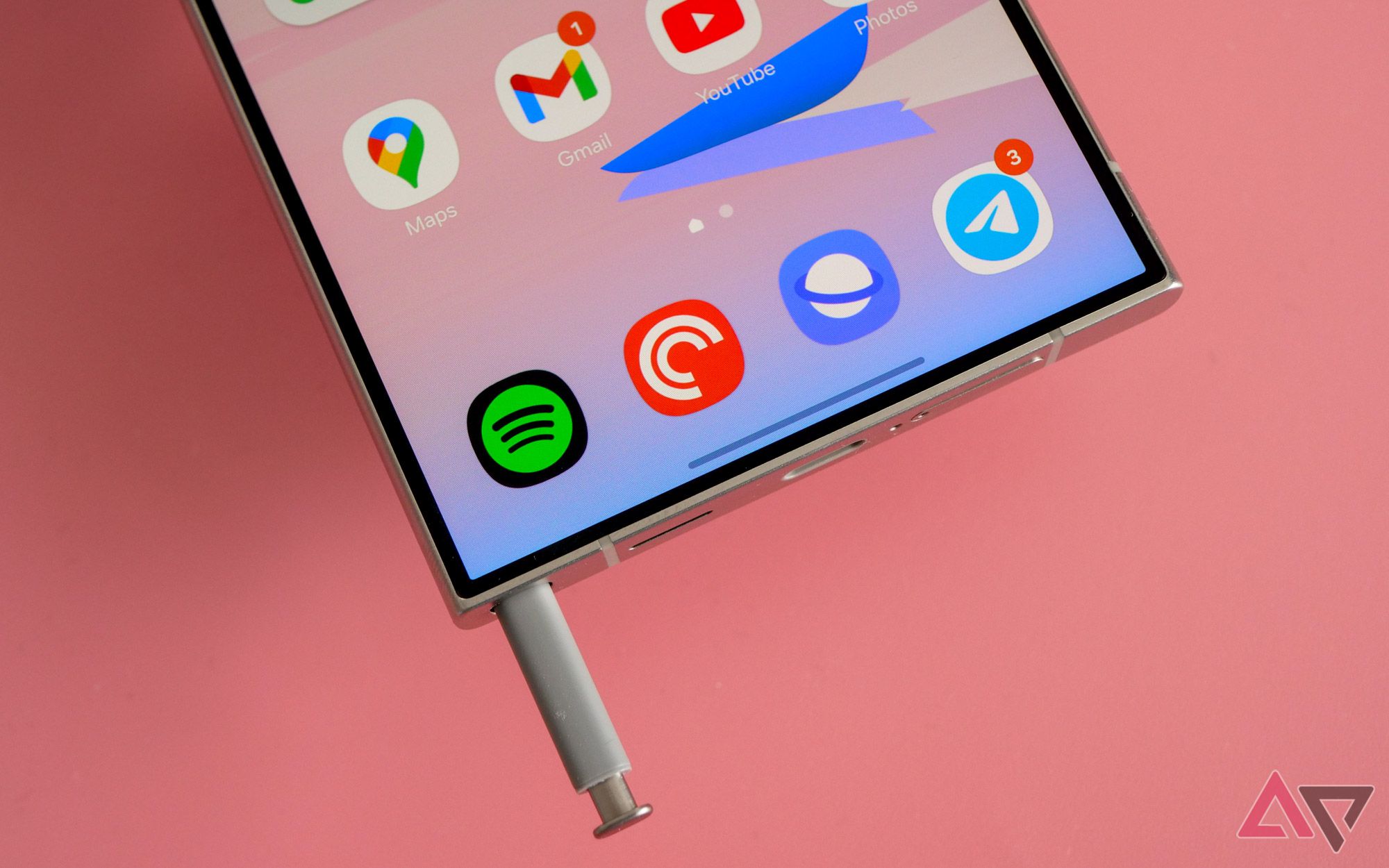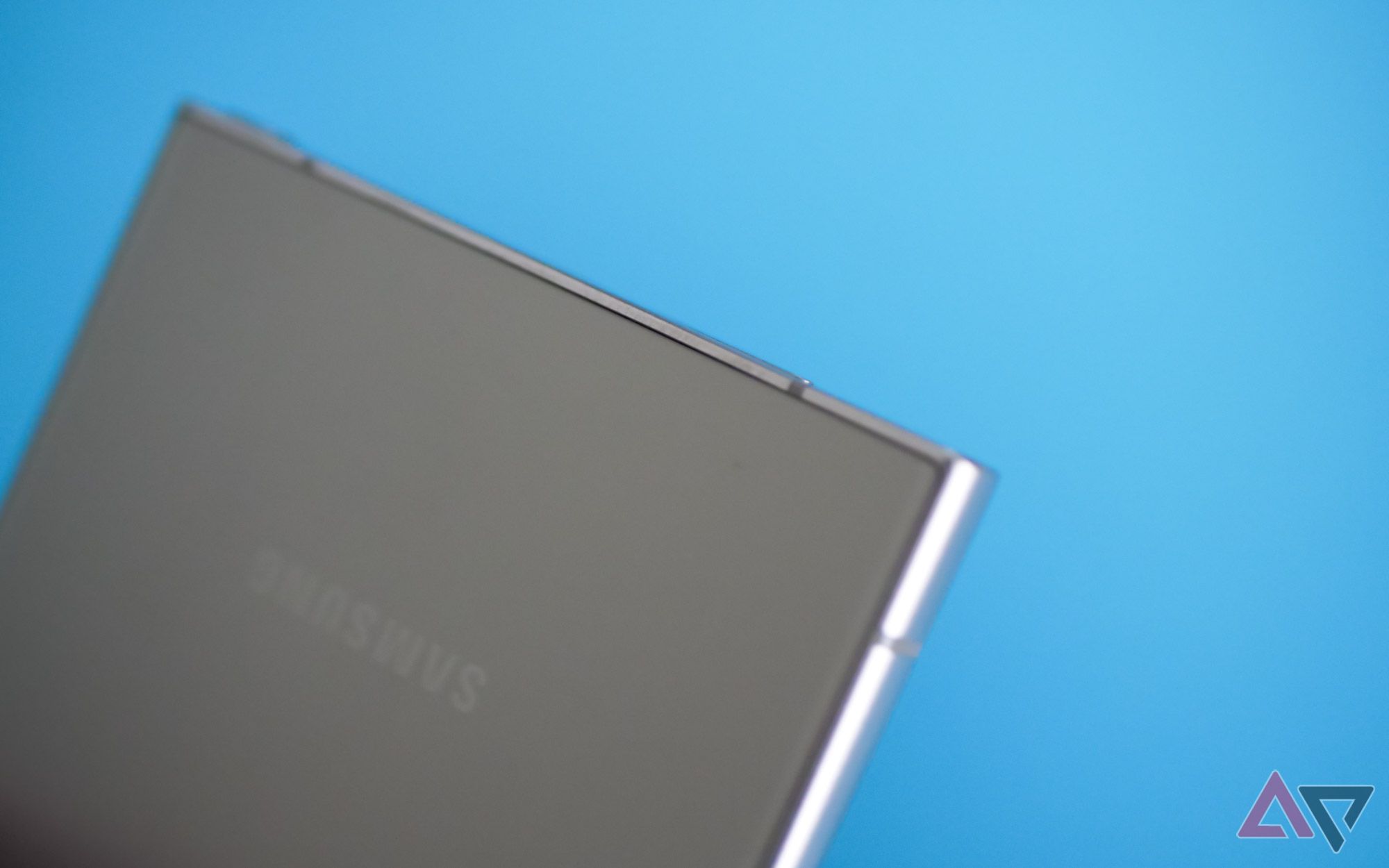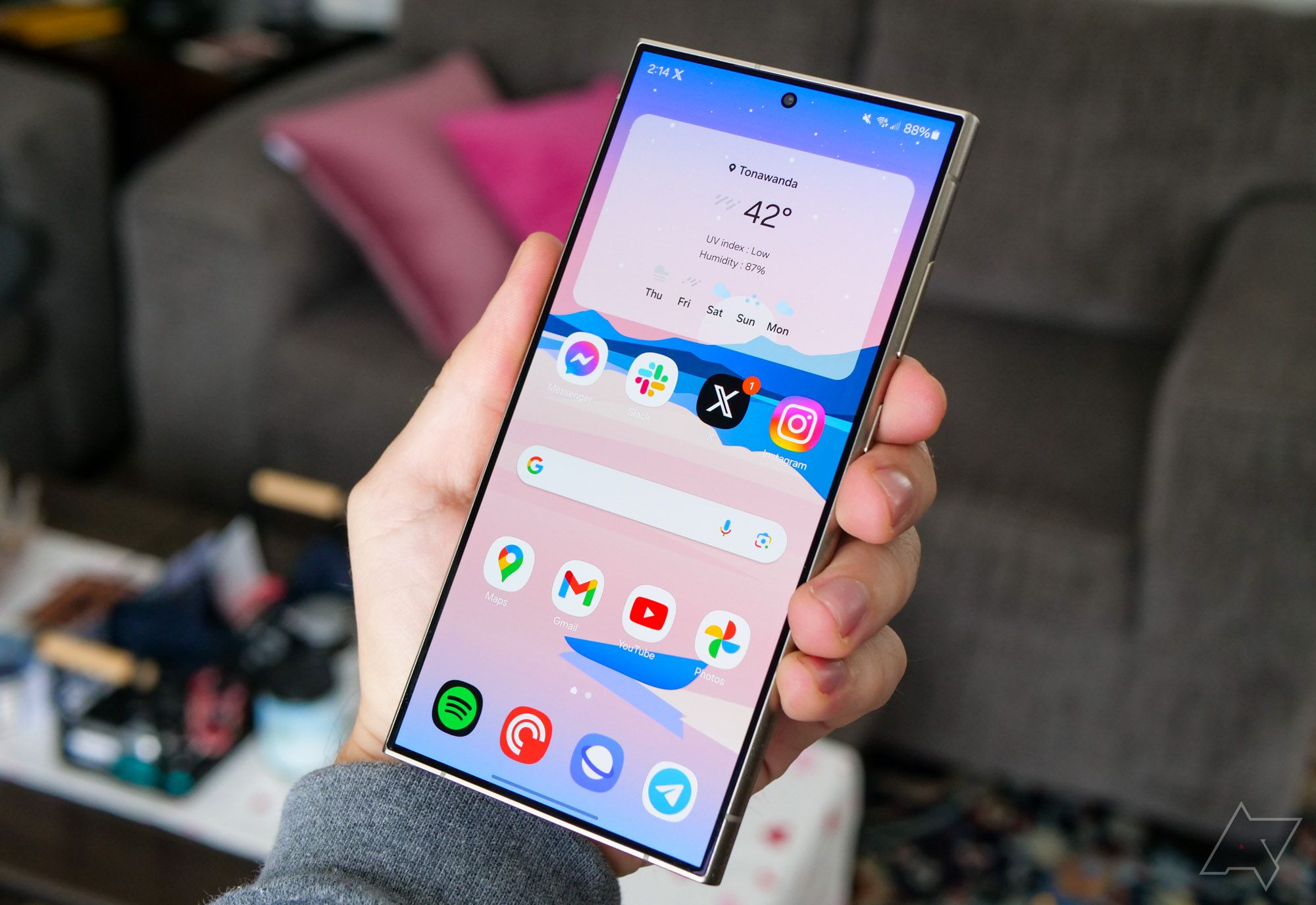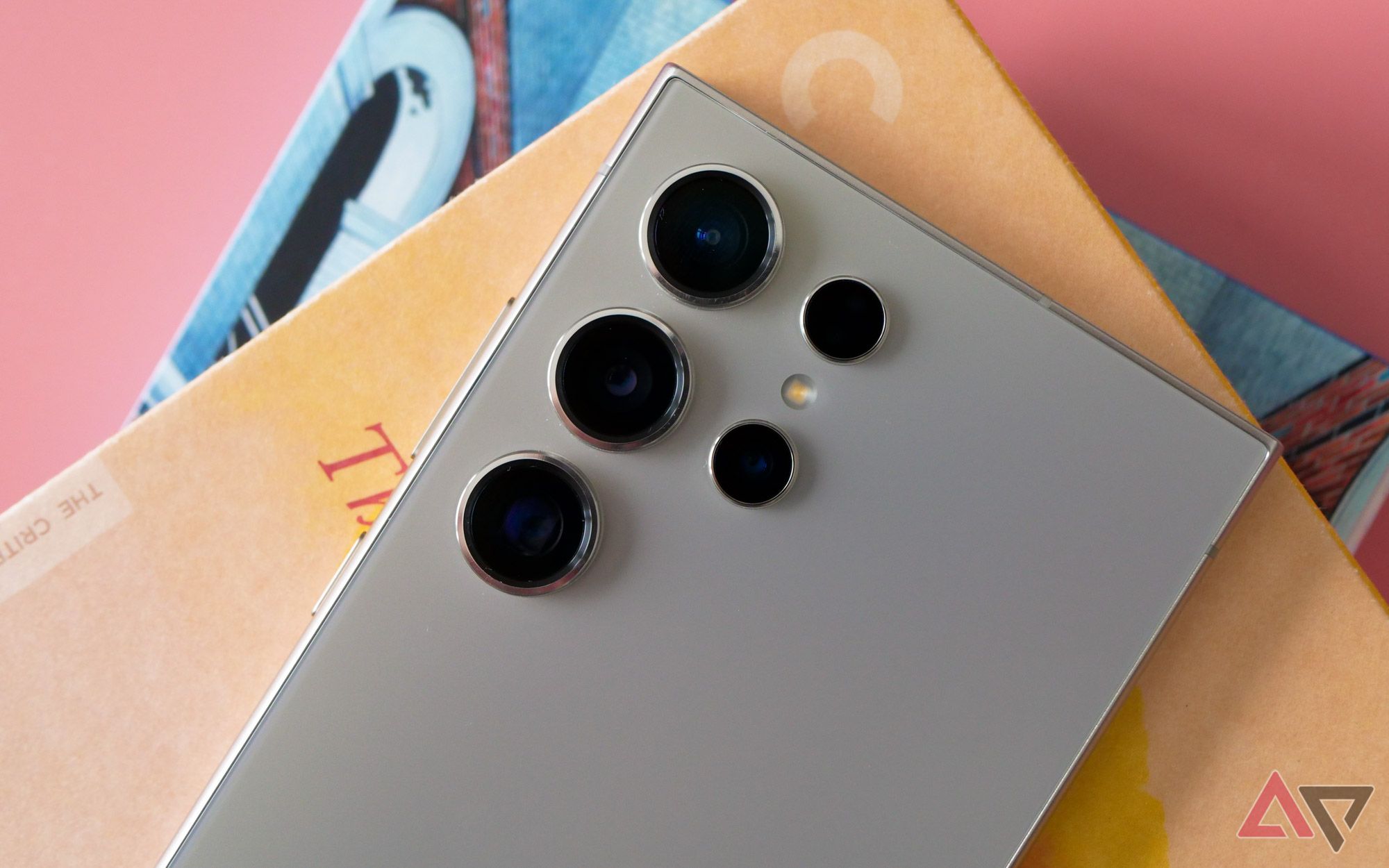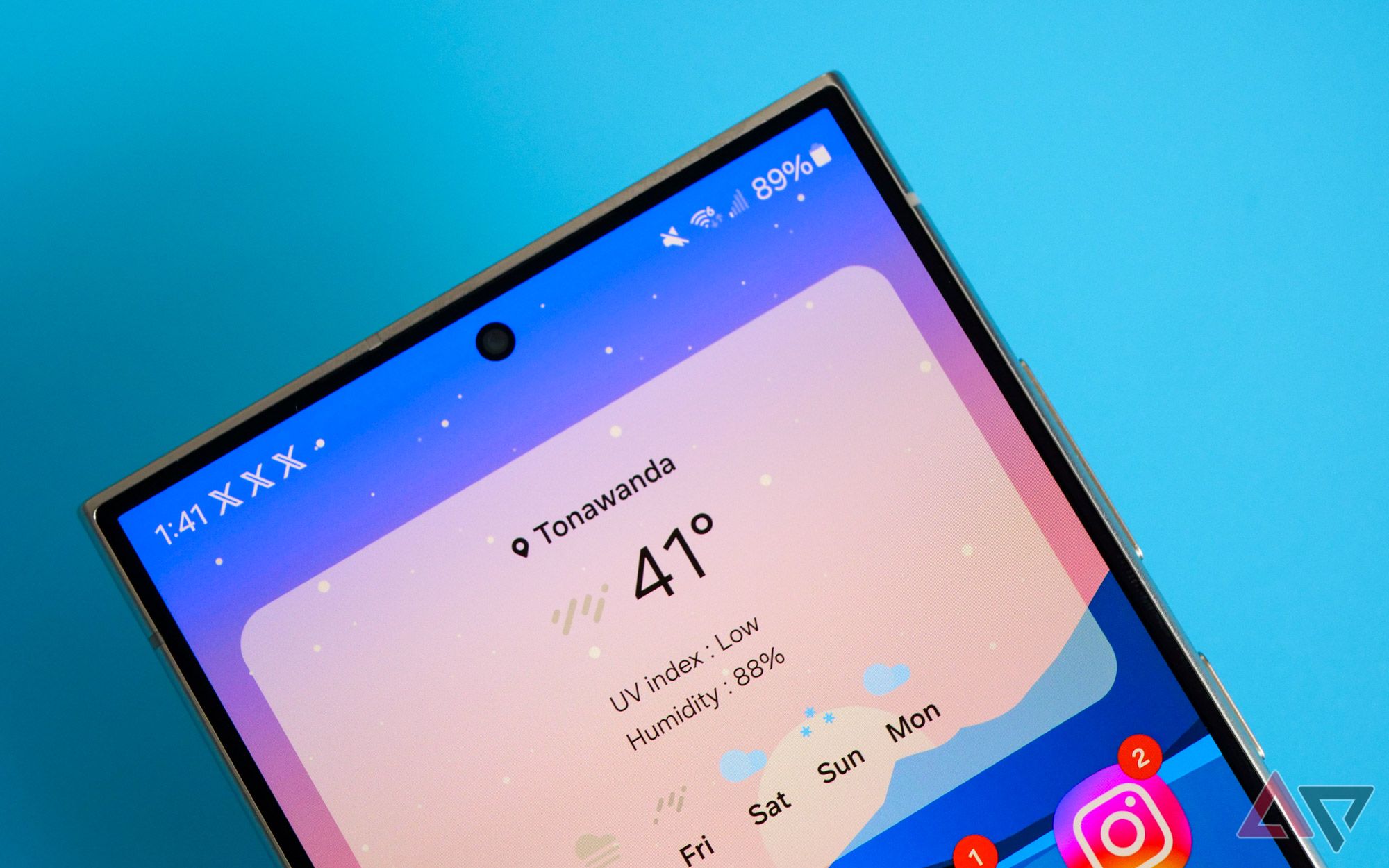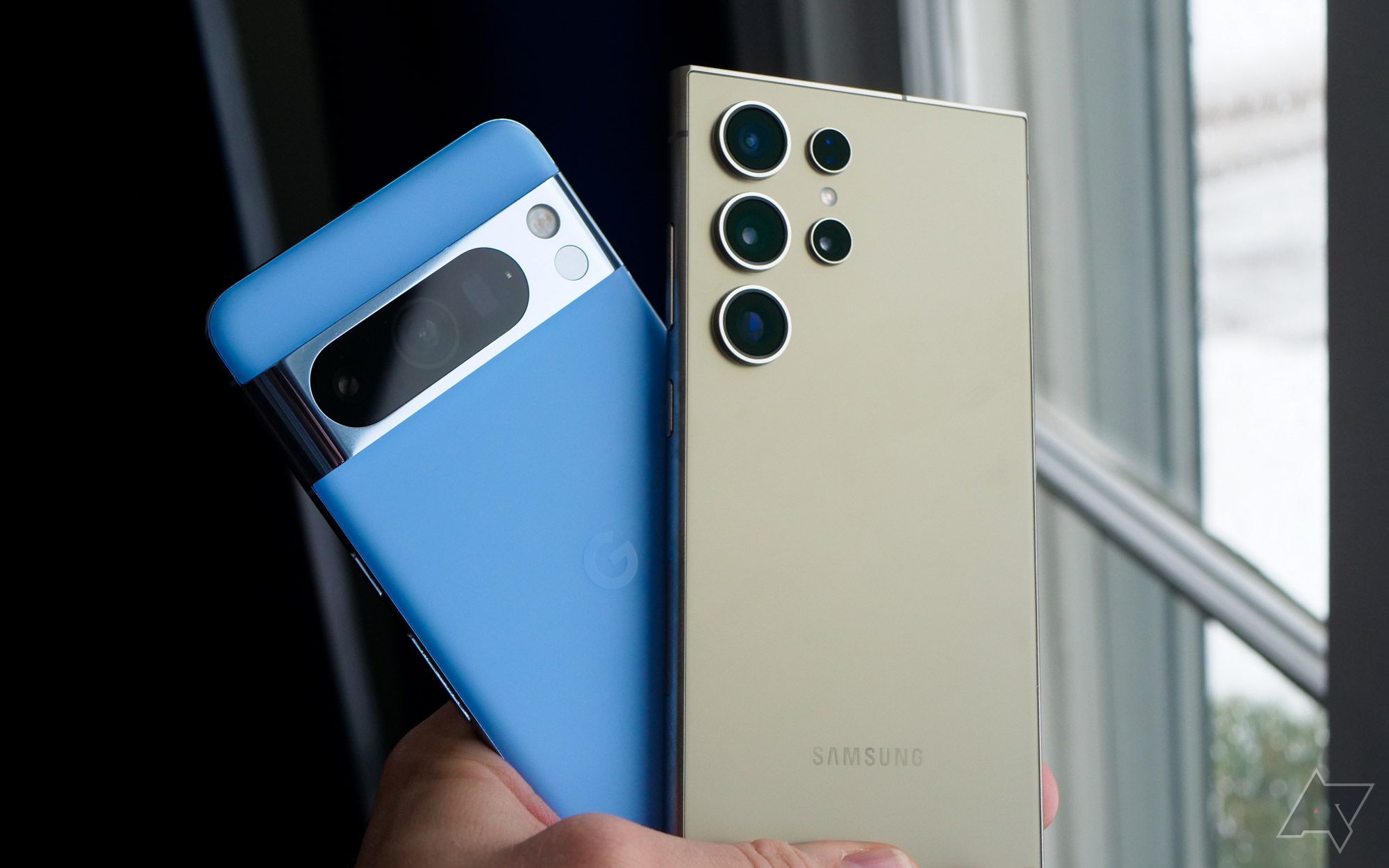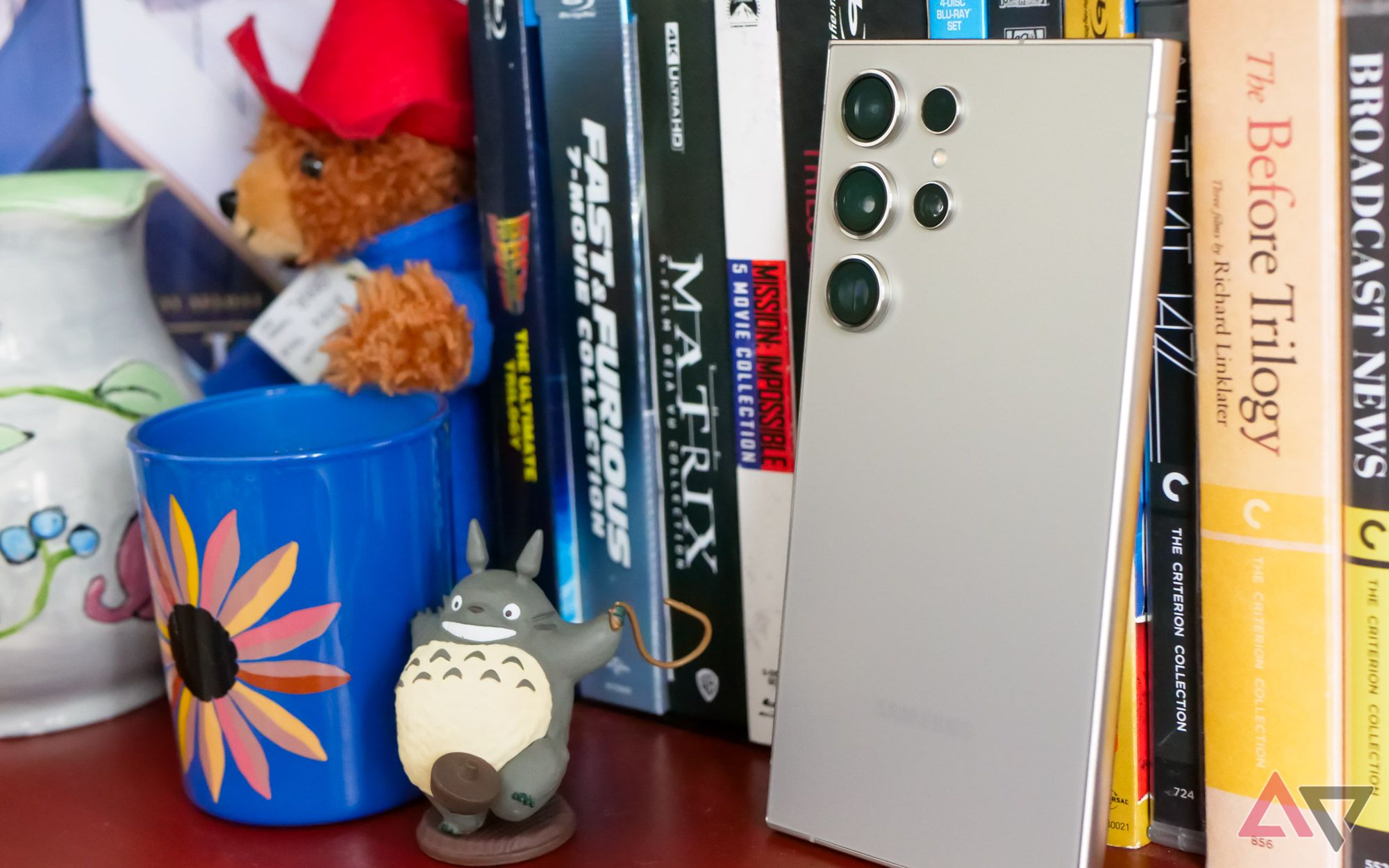When you follow the smartphone landscape as closely as we — Android Police writers and readers alike — do, it can be pretty easy to feel cynical about the current state of mobile. Yes, the S24 series is, at first blush, all too similar to its predecessors, but that only matters if you’re looking to upgrade every twelve months. Yes, features like AI and a titanium frame can feel like attempts at chasing the buzzword du jour, but if you can actually nail improved hardware and software down, even semi-refreshed hardware can feel invigorating. Just ask Google.
Samsung, however, is taking things to the extreme with the Galaxy S24 Ultra. This is a device that doesn’t feel all too different from years-old hardware, meaning even those upgrading from 2021 or 2022 phones might find themselves experiencing deja vu. And considering some of those AI features are set to trickle down to last year’s Galaxy S23 Ultra, it begs the question if there’s actually anything here that can justify the new $1,300 asking price? Frankly, I’m not sure there is.
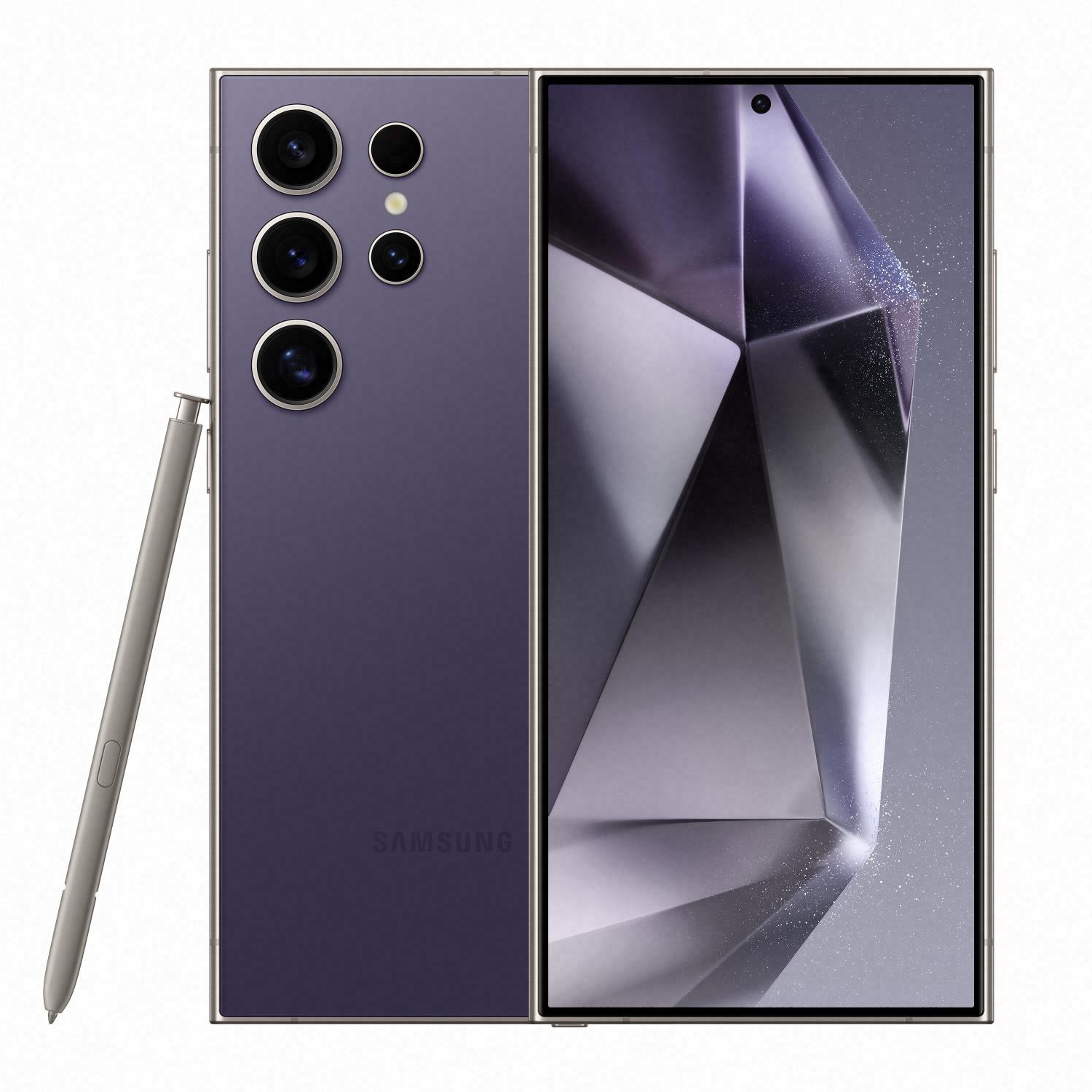
Samsung Galaxy S24 Ultra
Samsung’s latest hardware combines AI and titanium to try and compete for the buzziest phone of 2024. But underneath the sheen and polish of this pretty-yet-familiar design is a phone that feels at odds with itself, simultaneously improving on its predecessor in small ways without making any meaningful changes to the overall experience.
- SoC
- Qualcomm Snapdragon 8 Gen 3 for Galaxy
- RAM
- 12GB
- Storage
- 256GB, 512GB, or 1TB
- Battery
- 5,000mAh
- Ports
- USB-C
- Operating System
- Android 14 with OneUI 6.1
- Front camera
- 12MP, f/2.2
- Rear camera
- 200MP, f/1.7 main; 12MP, f/2.2 ultrawide; 10MP telephoto (3x); 50MP, f/3.4 telephoto (5x)
- Connectivity
- UWB, NFC
- Dimensions
- 162.6 × 79.0 × 8.6mm
- Colors
- Titanium Black, Titanium Gray, Titanium Violet, Titanium Yellow
- Display type
- LTPO AMOLED, 1-120Hz
- Weight
- 233g
- Charge speed
- 45W wired, 15W wireless
- IP Rating
- IP68
- Price
- $1,300
- Stylus
- S Pen included
- Display dimensions
- 6.8″, 19.3:9
- Display resolution
- 3088 × 1440
- Charge options
- Wired, wireless, reverse charging
- Cellular connectivity
- 5G mmWave & sub-6, LTE
- Wi-Fi connectivity
- Wi-Fi 7
- Bluetooth
- Bluetooth 5.3
- Maybe the best display on any smartphone right now
- Flat edges make for a much more comfortable experience
- You can get some pretty great shots from this thing.
- Excellent performance and multi-day battery life
- More expensive than ever
- These cameras seriously struggle with motion
- Titanium didn’t manage to shave off any meaningful weight
- Some fit and finish issues on a $1,300 device
Availability and network
It’s everywhere, on every network
Samsung’s latest supersized smartphone is available from practically anywhere you can buy smartphones. That includes not just retailers like Best Buy, Amazon, and Samsung’s own web store, but practically any carrier, from nationwide offerings like Verizon or AT&T to MVNOs like Google Fi. If you’re outside the US, you’ll likely find it in the electronics store of your choice — and, bonus, it’s the only S24 series device not using Exynos chips.
Just be prepared to pay for this year’s upgrade to titanium. The Galaxy S24 Ultra starts at $1,300, and it only gets more expensive as you look to load up more (non-expandable) storage space. While you can score a free storage upgrade during the preorder period, eventually, the 1TB model for this phone will top out at a whopping $1,660. As I write this, the 512GB Galaxy Z Fold 5 is on sale through Best Buy for just $80 more, and I’d expect to see similar deals as this year ticks on. When you’re talking about prices this high, it’s tougher than ever to avoid the siren call of foldables. These are the best Galaxy S24 deals you can find right now, if you do intend to buy this phone.
Design and display
You’ve been here before
If you’ve seen any of the Ultra-branded Galaxy Note replacements over the past couple of years — or, indeed, practically any Galaxy Note device dating back to 2019 — you know what this phone looks like. Samsung’s current mobile strategy seems to lean towards iteration and refinement over all else, making small changes generation after generation without shaking up its design. It’s far from the only company doing this — if anything, it’s become the norm — but I still think Samsung might be taking its safe approach a little too far.
Before I get too deep into a critique of the entire Galaxy design philosophy, though, let’s talk about what’s actually new. From the back, the S24 Ultra looks virtually identical to its predecessor — and, frankly, its predecessor’s predecessor. You have a smattering of lenses in the top left corner and, otherwise, it’s a block of metal and glass. This year, though, the metal portion of the device includes titanium. I’m not sure there’s a big benefit to it over what Samsung previously used in its smartphones, though; the weight is nearly identical to the aluminum-clad Galaxy S23 Ultra from last year.
You’ll find the other big change by turning the phone over. Yes, Samsung has finally deemed its decade-long curved glass experiment a failure — or, at the very least, something no longer pursuing. Curved glass isn’t gone forever (you can find it on phones like the OnePlus 12), but it’s clearly been reduced to a passing trend.
The flat display here feels great in the hand, reducing the need to rely on a case to help avoid accidental taps. Likewise, it makes using the S Pen all the way to the edge of the phone a whole lot easier. Really makes you wonder why Samsung ditched the curves on the smaller Galaxy S-series phones first.
Put the S24 Ultra next to the S23 Ultra and you’re bound to find a few more changes — a new speaker grill along the bottom and a flatter S Pen cap among them — but largely speaking, there’s not much new here in terms of design, even for those upgrading from much older devices. Consistency isn’t a bad thing, but I personally find Samsung’s style to be lacking any amount of character. The Dynamic Island (née notch) on the iPhone and the Pixel’s massive visor-like camera bar make for instantly recognizable smartphones. The random assortment of protruding lenses on the Galaxy S24 Ultra? Not so much.
Thankfully, the star of the show is brighter than ever, and I mean that quite literally. Samsung’s 6.8-inch AMOLED display is everything you could hope for, a 1-120Hz 1440p panel that now peaks at 2,600nits. If that wasn’t enough to compete with the ultra-bright displays phones like the Pixel 8 Pro are now rocking, the S24 Ultra is also the first smartphone to use Corning’s Gorilla Glass Armor, which acts to reduce reflections without causing display distortion.
It’s tough to really put numbers to this effect, but it’s there; the lights above my gym’s treadmill still reflected back at me, but compared to any other device using Victus 2 glass, it was noticeably muted. Whether you’re indoors or outdoors, it’s a great quality of life improvement — expect nearly every other smartphone OEM to adopt this glass on their most expensive flagships moving forward.
Other hardware and what’s in the box
Come on Samsung, throw me a bone
This is, as we’ve covered, a $1,300 smartphone, and as such, I expect it to reach a level of fit and finish that is above what you’d expect from, say, the Galaxy A15 5G announced on the same day. That’s why I find it so frustrating that my unit’s SIM card tray protrudes ever-so-slightly from the frame’s bottom, digging just enough into my hand to become noticeable.
I get that quality control at Samsung’s level can be difficult, but I’ve confirmed with at least one other reviewer that their SIM card tray is not flush with the phone. At this price, I consider this sort of thing borderline unacceptable, and I’d encourage any prospective buyers to inspect their units closely during unboxing. I’m please Samsung still uses a SIM tray — some smartphone manufacturers have decided to ditch them for the sake of locking users into an ecosystem — but that doesn’t mean that this sort of thing is excusable.
It’s tough to see, but look right around where that antenna line is.
As ever, Samsung continues to get the basics — haptics, speaker quality, and button feel — right. As best I can tell, there’s nothing new in any of those three categories this year; they were all good last year, and they’re good this year. I still think Samsung’s speaker sounds a bit tinny at its highest volumes, but otherwise, it’s an exceptional device for media.
The same goes for the S Pen. As best as I can tell, Samsung’s made no actual changes to its stylus beyond making its cap a bit flatter. It still sticks out just enough to make it easy to eject, but it’s a nice touch regardless. If you already love the S Pen, you’ll be happy it’s here; if not, you can safely continue to ignore its existence.
What’s in the box? I’m glad you asked. $1,300 gets you the phone, a short charging cable, and a SIM tool. I’m all for environmental efforts as the next guy, but considering you need a PPS charger to get the most out of your S24 Ultra experience, I do think Samsung should give buyers the option to bundle one at no extra charge during checkout. It won’t, but that doesn’t mean I can’t keep calling the company out on it.
Software and performance
Have you heard of AI?
Obviously, the big story this year is Galaxy AI, a platform that, at least in its earliest iteration, feels as wide as a lake and as deep as a puddle. I’m not going to go feature by feature in this review; spending 150 words describing and explaining Browsing Assist or Interpreter isn’t going to do anyone any good. Samsung, like most companies, is in its experimentation era when it comes to “AI-powered” features, throwing a lot of ideas at the wall and seeing what sticks.
And so far, it’s the tools closest to what Google’s working on that seem to make for the best use cases. Take Circle to Search, for example, which sports Google branding and is already out on the Pixel 8 and 8 Pro. Circle to Search is not a new idea — its results look and feel a hell of a lot like Lens, and even the act of searching what’s on your display comes directly from Google Now on Tap, an ancient, discarded tool that was part of Google Now.
But it’s better than both of its predecessors, even in this early state. Tapping and holding the gesture bar is awkward, sure, but once the mode is active, searching for specific text or addresses can be pretty handy. I wish searching for context from images didn’t just bring up a whole host of more images — if I circle the poster for Barbie, for example, you still have to open a new search to get to its Wikipedia page — but if I get the muscle memory down, it seems like a pretty useful feature in a pinch.
Still, much of what’s here falls into one of two categories: either I can only see myself using it every so often (Live Translate, Interpreter) or never (Browsing Assist, Chat Assist). Many of these are even restricted to Samsung’s own apps, and while I’ll grant that as sensible, it doesn’t mean I’m more likely to use them. I can’t stand Samsung Keyboard, for example, practically guaranteeing I’ll never use Writing Assist for more than the couple of hours I did post-unboxing.
What’s left are things like Note Assist, which can straighten handwriting or even convert it into text. It works well enough — minus some misspellings when trying to recognize my chicken scratch — but is this a feature that needs to be advertised as AI-powered? Moreover, is this something you’d pay for in just a couple of years, once Samsung deems Galaxy AI worth a monthly subscription? The company has a long, long way to go to prove any of this is worth more than the price of the hardware itself.
That last image wasn’t actually my lock screen wallpaper.
Otherwise, One UI 6.1 remains a fine enough experience, though I’ve never found myself totally comfortable here. It’s downright criminal that Samsung has refused to ship a vertical app drawer, and no, the Good Lock modification doesn’t count. The new always-on display is fine, but the lock screen widgets aren’t quite as useful or plentiful as I’d like. And from my missing cloud backup settings to the lock screen backdrop randomly changing while customizing my experience, everything feels a little buggy, a little unfinished. That’s an experience I’m used to from Google; Samsung, not so much.
I really don’t have much to say about performance beyond the simple observation that, once again, Qualcomm has seemingly knocked it out of the park with the Snapdragon 8 Gen 3. That makes sense — it’s not all that different performance-wise from its predecessor. Android is missing out on some seriously good games lately, but the S24 Ultra can handle what is on the Play Store without breaking a sweat. Likewise, I think I’ve only felt the phone get warm two or three times during my first week with it.
Camera
A real mixed bag
I’ll keep it simple: Samsung has yet to fix its problems with both subject motion and shutter speed on its flagship camera, even in bright situations. You can get some really stunning photos out of this phone, but it’s just as likely to fail to capture a moment that its closest rivals would nail without breaking a sweat. I’m not sure an untrustworthy camera is as bad as a poor quality one, but it’s not far off. Landscapes, sunsets, short walks around your neighborhood — these are all things the Galaxy S24 Ultra is capable of handling. Kids, pets, and anything else in motion? Not so much.
In fact, I have a single image that tells you everything you need to know about this camera system. Beyond all of the AI features, the multiple lenses, the new pixel binning methods, beyond everything, is this image, taken about an hour and a half before sunset. It’s a bus slowing down to stop at a stop light, traveling no faster than 10MPH, and almost certainly slower than that as it breaks. The bus is blurry.
This isn’t a tricky shot, and the fact the Galaxy S24 Ultra fails to capture it speaks volumes. Now don’t get me wrong — I’ve captured some excellent shots with this phone, even with moving objects. It’s the unpredictability, the inconsistency of this camera that truly sinks it. Even if I’ve got some shots out of this lens that I prefer over similar shots from my Pixel 8 Pro or iPhone 15 Pro Max, what does it matter if the phone fails to live up to the occasion when speed, accuracy, and a clear shot truly matter?
Without further ado, here are a whole bunch of samples taken with the main 200MP f/1.7 lens, most of which speak for themselves.
The final four shots alternate between night mode off and on.
I think the big question going into this review was how the new 50MP f/3.4 5x periscope lens would hold up against the 10MP f/4.9 10x zoom lens from last year. On paper, I don’t have nearly as many objections to this change as I’ve seen across the web. A 10x zoom sounds nice, but in practice, it’s often closer to subjects than I’d rather approach. If Samsung can achieve a similar 10x quality while relying on digital zoom for everything after 5x, it might actually be more useful in the long run.
So, did Samsung pull it off? Yes and no. While I personally prefer having the 5x lens to avoid having to capture 5x shots from the 3x lens, the 10x comparisons I took — once again, outdoors in broad daylight — are, in the best case scenario, comparable assuming you avoid pixel peeping. A couple of examples, however, showcased the obvious downgrade that comes with switching from a hardware-based solution to a software-based one. As is often the case, the best in photo processing just can’t take down a dedicated lens. It also has a big impact on how 100x shots look, though it’s a toss up as to whether
Galaxy S24 Ultra first, Galaxy S23 Ultra second.
Samsung’s night photography — nightography — skills remain solid enough, so long as you avoid too much motion in your shots. In some cases, I actually preferred photos without Samsung’s automatic night mode enabled, as the phone tended to default to overexposing outdoor low-light scenes. This isn’t a problem unique to the Galaxy S24 Ultra, but it’s a problem nonetheless. And I don’t believe the ultrawide or the selfie cameras have been upgraded over the Galaxy S23 Ultra, but you’ll also find a handful of samples in this review anyway.
More camera samples, this time vertical.
The camera is one area where Samsung should be pushing forward, regardless of its decision to keep its hardware as close to the status quo as possible. But instead of making up for some of the shortcomings seen in the S23 series, nearly everything about this camera lineup is unchanged from a hardware standpoint. Yes, you’ll find a slew of AI-focused camera tools — instant slow-mo, edit suggestions, and more — but considering the Galaxy S24 Ultra now feels decidedly behind the competition on sheer output alone, does it even matter?
Battery life and charging speeds
So good it’s difficult to test
Maybe I’m getting softer on smartphones, but through regular use in my first week with the phone, I struggled to even come close to killing this thing. On my most intensive days, I failed to get the battery below 30 percent, regardless of what I was doing with the device. On a day where the majority of my use was futzing around with apps while connected to Wi-Fi, I saw about seven hours of screen-on time. On a day where I was primarily on cellular data and shooting a ton of photos and videos, that number dropped to about four hours.
Either way, these are excellent numbers. For the vast majority of smartphone users, the Galaxy S24 Ultra is likely a multi-day smartphone. And that’s good, because for another year, Samsung has opted not to give its charging speeds any attention. Like multiple generations of hardware before it, the S24 Ultra supports 45W fast-charging through a supported (and sold separately) PPS charger. It’s capable of powering up to 50 percent in about 30 minutes before slowing down its charge rates.
That’s good enough for a night out, but it’s not the kind of life-altering charging speeds you’ll find on devices like the OnePlus 12, and I think that’s a shame. Yes, there are trade offs to faster charging times, but I’d like to see the option to top up my Galaxy S24 Ultra a whole lot faster than this. When I’m daily driving a OnePlus phone, I don’t think about plugging it in at night, and frankly, that sort of freedom can really change how you use your device. Sadly, it’s not an experience you’ll find on Samsung hardware.
Competition
If you want AI alternatives, you know where to go
The mobile market has shrunk to the point where, with few exceptions, nearly any flagship smartphone could be considered competition to Samsung’s latest phablet. At the same time, though, if you’re looking for devices this powerful with a stylus built into the chassis, you’re going to come up empty-handed. Rather than attempt to focus on the company’s productivity tools, let’s focus on the overall experience: a big screen paired with all of the AI tools you can dream up.
The obvious answer here is the Pixel 8 Pro. Its display is nearly as large and as bright, its design is a little friendlier in the hands thanks to those curved corners, and the camera is far more predictable when handling motion. You’ll get the same seven years of OS support, too, guaranteeing a long lifetime, and that’s to say nothing of Google’s AI features, which the company has kept building out in the months post-launch.
It’s not a perfect comparison of course, even discounting the S Pen. Google’s launcher is clean, but it can feel a little too simple and restrictive for some users. Performance isn’t quite up to par either — ironically thanks to Exynos foundation-based Tensor chips — but it still manages to outperform older Pixels without breaking a sweat. And at $300 cheaper, you’re getting Google’s best phone for the price of Samsung’s middle child.
In terms of sheer power, the OnePlus 12 is another exceptional choice. As our review found, it ditches all of the AI tools for a more streamlined smartphone experience. A massive battery, a large display with all the curved edges you could dream about, and an eye-catching marble pattern on the green model help to make for a phone that stands out among the competition. The camera’s not too shabby, either, and thanks to its Hasselblad color science, you can get a pretty striking image out of it.
Should you buy it?
At this point, you probably know if Samsung’s flavor of Android is right for you. There’s enough unique about One UI that is unique to this platform to keep plenty of users in its ecosystem. Even as Samsung has turned its sites towards more mainstream buyers, dropping aspects like the microSD card slot or headphone jack — and you know the SIM card tray is next — so much of One UI feels like a power user’s dream. Throw in the S Pen for good measure, and the
But with a starting price of $1,300, this phone needs to be just shy of perfect to get as strong a recommendation as its cheaper competition, and I don’t think it lives up to that mark. Camera performance is too inconsistent, the AI features don’t feel fully baked, and even the fit and finish just feels a little lackluster this year. Throw in a stale design that fails to catch my attention the same way Google’s Pixel 8 Pro did last year, and it’s a tough bargain. The Galaxy S24 Ultra is a phone that’ll make plenty of people happy, but it’s just not something I can recommend to everyone without more than a couple of asterisks.

Samsung Galaxy S24 Ultra
It’s not an overhaul by any means, but even small changes like (finally) swapping back to a flat touchscreen and seven years of system updates help the Galaxy S24 Ultra stand apart from its predecessors. Galaxy AI’s suite of features are front and center, as well as Google’s latest utilities like Circle to Search, and this AI craze even brings its magic to the Ultra’s cameras for after-the-fact super slo-mo.
Source link

